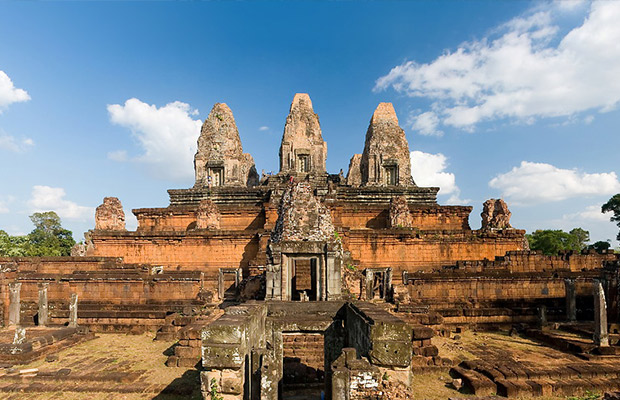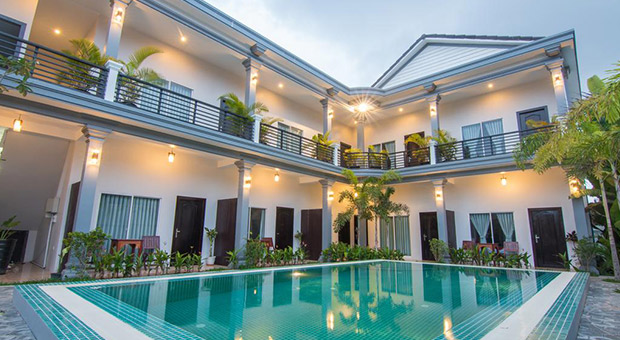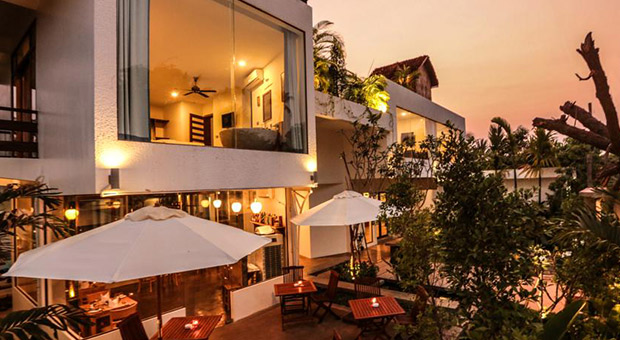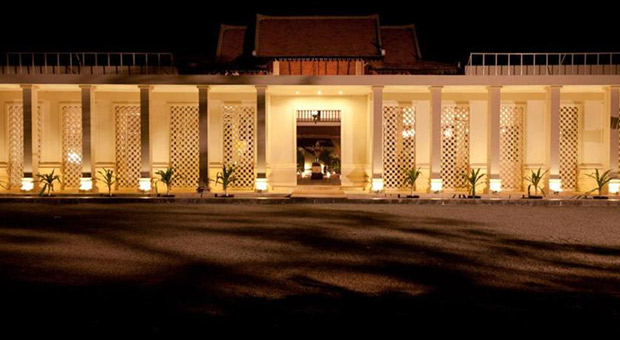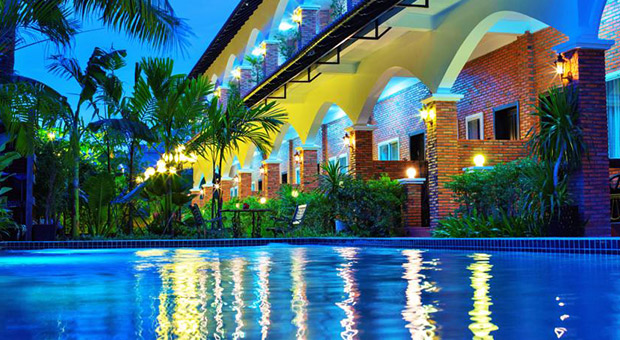- Home
- Siem Reap Travel Guide
- Prasat Pre Rup
Prasat Pre Rup
Prasat Pre Rup
- Travel Location Siem Reap
Pre Rup is a Hindu temple at Angkor, Cambodia, built as the state temple of Khmer king Rajendravarman and dedicated in 961 or early 962. It is a temple mountain of combined brick, laterite and sandstone ...
OVERVIEW
Architecturally and artistically superior temple-mountain. Beautifully carved false doors on upper level, as well as an excellent view of the surrounding countryside. Richly detailed, well-preserved carvings, particularly on the lintels. Traditionally believed to be a funerary temple, but in fact the state temple of Rajendravarman II. Historically important in that it was the second temple built after the Khmer capital was returned to Angkor after a period of political upheaval when the capital had been moved to Koh Ker. The artistically similar East Mebon was the first to be constructed after the return to Angkor, less than a decade earlier.
Video Travel Inspiration
Pre Rup (Khmer: ប្រាសាទប្រែរូប) is a Hindu temple at Angkor, Cambodia, built as the state temple of Khmer king Rajendravarman and dedicated in 961 or early 962. It is a temple mountain of combined brick, laterite and sandstone construction.
The temple’s name is a comparatively modern one meaning "turn the body". This reflects the common belief among Cambodians that funerals were conducted at the temple, with the ashes of the body being ritually rotated in different directions as the service progressed.
The Site of Pre Rub Temple
Located just south of the East Baray, or eastern reservoir, Pre Rup is aligned on a north-south axis with the East Mebon temple, which is located on what was an artificial island in the baray. The East Mebon was also a creation of the reign of Rajendravarman. Pre Rup's extensive laterite and brick give it a pleasing reddish tone that is heightened by early morning and late afternoon sunlight. The temple has a square lay-out and two perimeter walls. The outer enclosure is a platform bounded by a laterite wall, 117 meters N-S by 127 meters E-W. A laterite causeway gives entry from the east; unfortunately, a modern road cuts across it. The four external gopuras are cross-shaped, having a central brick section (consisting of three rooms flanked by two independent passageways) and a sandstone vestibule on both sides. To either side inside the eastern gate is a group of three towers aligned north to south. One of the towers appears to have never been built or to have been dismantled later, however they are later additions, probably by Jayavarman V. Further ahead, through another gate, libraries lie to either side of the walkway on the second platform. Just before the entrance there is a stone "cistern", but scholars believe it was a basement for a Nandi bronze statue rather than being used for cremation ceremonies.
There is also a series of long distinct galleries running along each side, a distinctive feature of 10th century architecture that would be substituted by a continuous gallery from Ta Keo onward.
The final squared pyramid, measuring 50 m at its base, rises in three steep tiers a dozen metres in height to a 35 m square platform at the summit. The lowest tier is symmetrically surrounded by 12 small shrines. At the top, five towers are arranged in a quincunx, one at each corner of the square and one in the center. Deities carved as bas-reliefs stand guard at either side of the central tower’s eastern door; its other doors are false doors. The southwest tower once contained a statue of Lakshmi, the northwest tower a statue of Uma, the southeast tower a statue of Vishnu and the northeast tower a statue of Shiva. The last one has an inscription on doorjambs that dates from Jayavarman VI and is the only proof of his reign at Angkor.
The History of Pre Rub Temple
Pre Rup was dedicated to the Hindu god Shiva, and it is probably located on a former shivaite ashram, built by Yasovarman I in the previous century. Perhaps it was standing at the centre of a new capital city built by Rajendravarman, with the southern dike of East Baray as northern city limit, but nothing of the dwellings survived and this "eastern city hypothesis" by Philippe Stern was never confirmed by archeological discoveries.
Related Hotels in Siem Reap
Harmony Boutique Hotel
Rooms overlook a central garden area at Harmony Boutique Hotel, which offers free WiFi in its common areas. The hotel has its own restaurant, 24-hour front desk and provides a free, one-way airport pick-up. Located in Siem Reap, the property is ...
Chez Moi Suite & Spa
Featuring an outdoor swimming pool and a spa centre, Chez Moi Suite & Spa offers contemporary-style, air-conditioned rooms and suites. Guests can enjoy meals at the in-house restaurant or have a drink at the bar. Free WiFi is available ...
The Samar Villas & Spa Resort
Samar Villas & Spa Resort is just a stone’s throw from the magnificent ruins of Angkor. It offers Khmer cooking classes and a library with extensive literature on Angkor. The Samar Villas & Spa Resort is only one kilometer from the center of ...
My Unique House Boutique Villa
Located in Siem Reap, My Unique House Boutique Villa features an outdoor pool and a spa. It also offers complimentary airport shuttle and bike rental services. Free WiFi is provided in its public areas. Fitted with a balcony offering garden ...
Seasons d’Angkor Villa
Nestled within private gardens, Seasons d'Angkor Villa offers accommodation away from the hustle and bustle of Siem Reap. It has its own restaurant and an in-house library. Free private parking and free WiFi in common areas are available. ...
Sokha Angkor Resort
Sokha Angkor Resort offers luxurious resort living in central Siem Reap. The hotel offers wellness and relaxation with spa treatments and facilities within its private gardens. The property features an outdoor pool available all year round and ...
Free Property Registration
We market your property to a large audience of travellers worldwide, Join us today.




